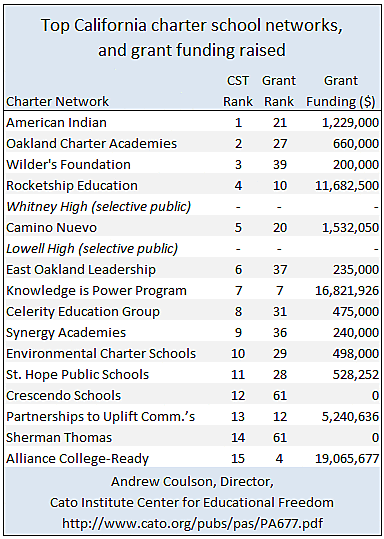Much of the response to the study I released last week has focused on the relative academic performance rankings of California’s charter school networks. That wasn’t the point of the study, which focuses on whether or not philanthropy + charter schooling can replace venture capital and competitive markets as a mechanism for scaling-up the best education services. Rather than try to fight the tide, I thought I’d just share the relevant rankings in an easy-to-link form, and once the debate about them dies down we can return to the larger policy point.
With that in mind, the first table below lists the top 15 charter school networks in terms of performance on the California Standards Tests, adjusted for student factors and peer effects. For comparison, two non-charter schools are included: the academically selective elite public prep schools Gretchen Whitney and Lowell–both of which feature in most lists of the top public schools in the country. There are 68 networks with the necessary data, but the lowest grant rank is 61 because eight of the networks received no philanthropic funding at all.
Next is a list of the charter networks that philanthropists have invested-in most heavily, with a view to replicating their models. Notice the minimal overlap? I repeat this comparison in the study with Advanced Placement test performance, and find the same pattern (it’s just slightly worse).
Every one of the above networks received substantially more grant funding individually than the top three highest achieving networks… combined.


